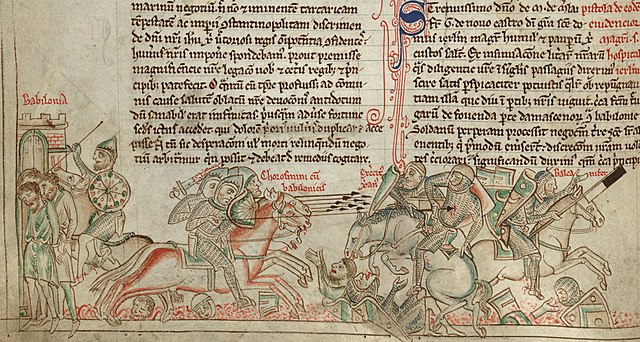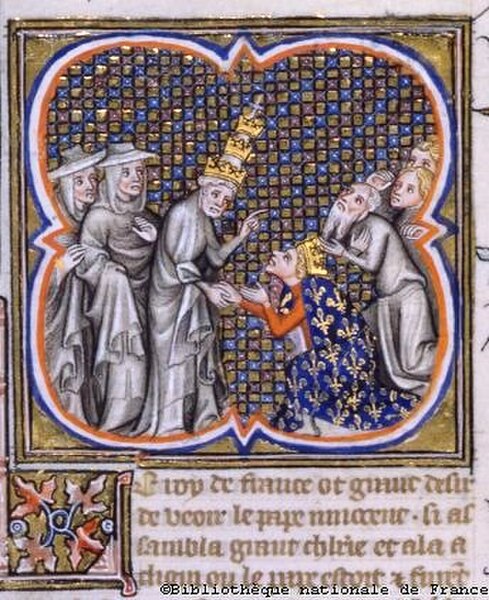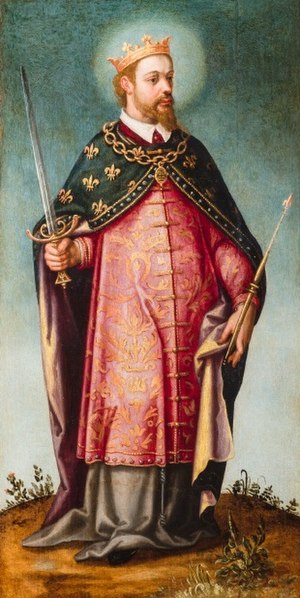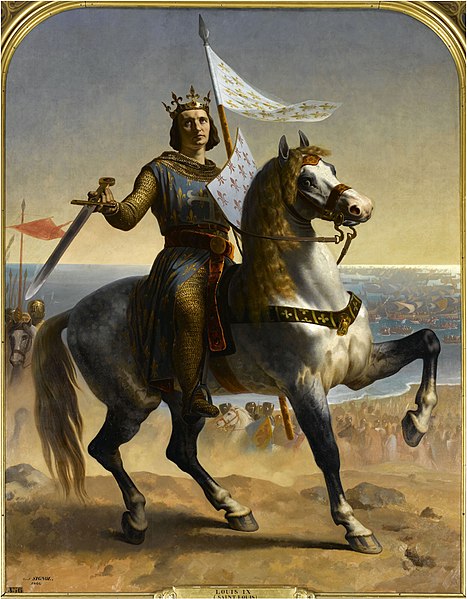The Seventh Crusade (1248–1254) was the first of the two Crusades led by Louis IX of France. Also known as the Crusade of Louis IX to the Holy Land, it aimed to reclaim the Holy Land by attacking Egypt, the main seat of Muslim power in the Near East. The Crusade was conducted in response to setbacks in the Kingdom of Jerusalem, beginning with the loss of the Holy City in 1244, and was preached by Innocent IV in conjunction with a crusade against emperor Frederick II, Baltic rebellions and Mongol incursions. After initial success, the crusade ended in defeat, with most of the army – including the king – captured by the Muslims.
Louis IX during the Seventh Crusade
Battle of La Forbie, from Chronica Majora by Matthew Paris
Innocent IV with Louis IX at Cluny
Ascelin of Lombardy with the Mongol general Baiju.
Louis IX, commonly revered as Saint Louis, was King of France from 1226 until his death in 1270. He is widely recognized as the most distinguished of the Direct Capetians. Following the death of his father, Louis VIII, he was crowned in Reims at the age of 12. His mother, Blanche of Castile, effectively ruled the kingdom as regent until he came of age and continued to serve as his trusted adviser until her death. During his formative years, Blanche successfully confronted rebellious vassals and championed the Capetian cause in the Albigensian Crusade, which had been ongoing for the past two decades.
Contemporary depiction from the Bible of St Louis, c. 1230
San Luis, Rey de Francia (English: Saint Louis, King of France) by Francisco Pacheco
Painting of Louis IX by Emile Signol
Pope Innocent IV with Louis IX at Cluny







